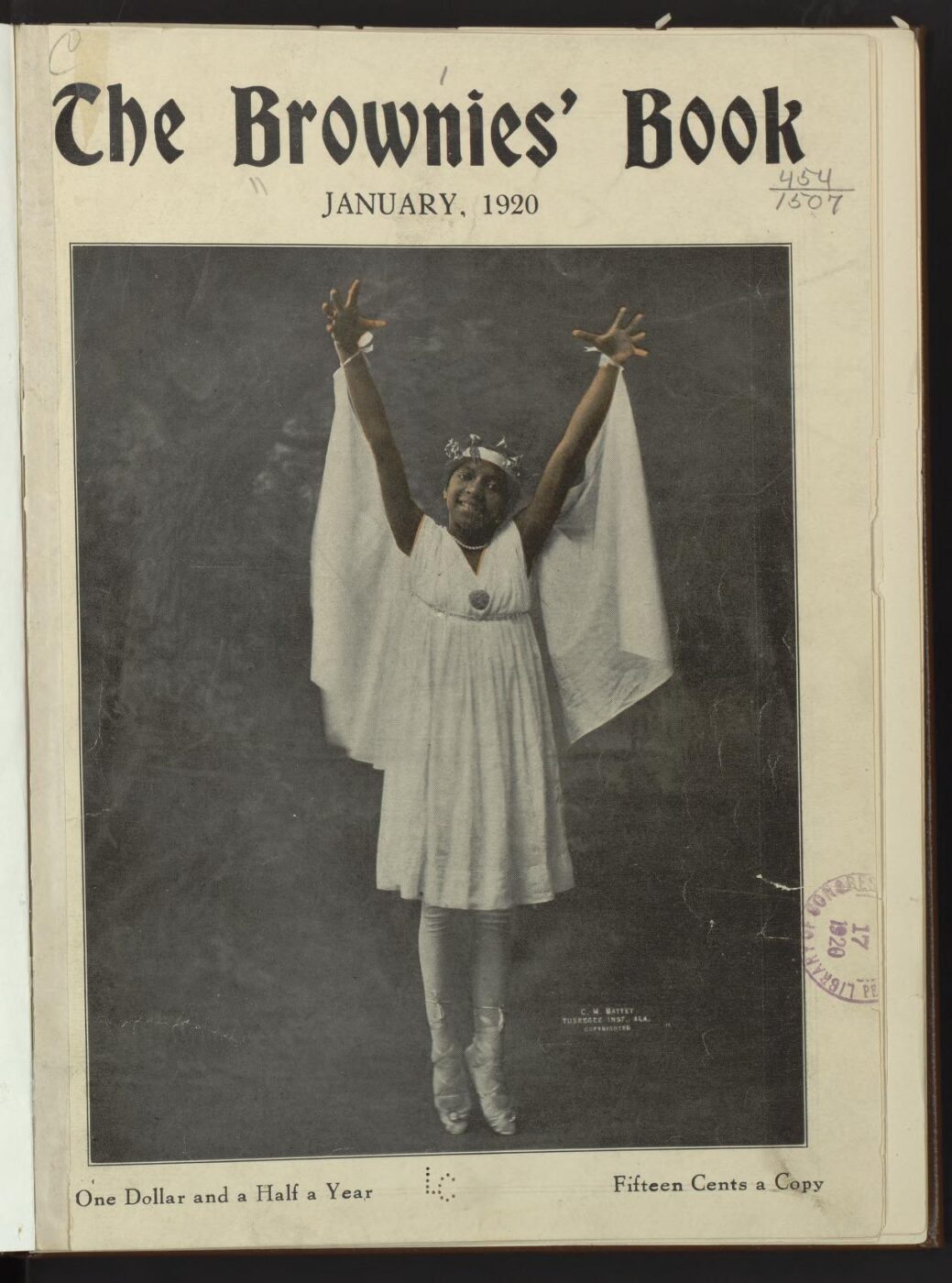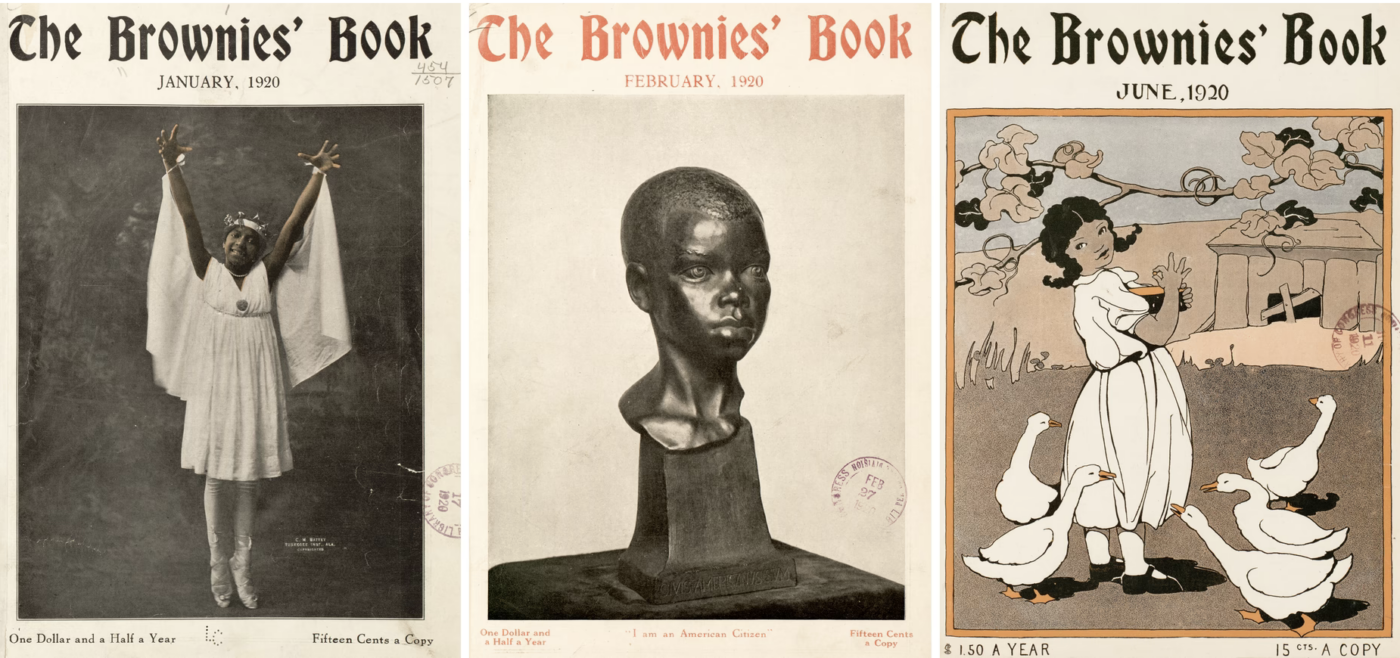The Legacy of The Brownies’ Book
On October 10, 2023, Chronicle Books published The New Brownies’ Book: A Love Letter to Black Families. It’s an anthology assembled by Karida L. Brown and Charly Palmer that combines the work of more than 50 contemporary Black artists and writers with selections published over a century ago from the original Brownies’ Book. Published by W.E.B. Du Bois at 70 Fifth Avenue (located South of Union Square), the groundbreaking original magazine only lasted for two years in the 1920s, but as the first magazine ever published for Black children, it had a very significant impact on how those young people of that period viewed themselves and others, as well as the world around them.

The Brownies’ Book: A Monthly Magazine for Children of the Sun was published in 1920-21 at 70 Fifth Avenue (2-6 West 13th Street), a significant hub for a range of progressive, human rights, and civil liberties organizations in the ’20s and ’30s. The NAACP was headquartered there, launching its early campaigns against lynching, employment discrimination, voting disenfranchisement, and defamatory representations in the media. Its monthly magazine The Crisis was also housed in the building. It was also the early or original home for the ACLU, the American Federation of Teachers, the League for the Abolition of Capital Punishment, the League for Industrial Democracy, the Women’s Peace Party, the Carnegie Council for Ethics in International Affairs, and the Near East Foundation, among others.
Village Preservation pushed to honor this legacy, successfully campaigning to win landmark status for 70 Fifth in 2021 and placing a historic plaque there in 2022.
The story of The Brownies’ Book originated in the pages of The Crisis, which Du Bois also edited. The latter magazine published a “children’s number” every year, aimed at educating and growing the racial consciousness of young Black people. The annual issue, like every other issue of The Crisis, also covered the grim realities of racial violence that the Black community in the United States experienced. Du Bois grew increasingly concerned about presenting those horrors in the always popular issue, and the impact these reports would have on Black children learning about their culture and history, as well as on any hatred toward white people. In 1919, he announced the launch of a new and separate publication The Brownies’ Book, with seven stated goals:
- “To make colored children realize that being ‘colored’ is a normal beautiful thing.
- ‘To make them familiar with the history and achievement of the Negro race.
- ‘To make them know that other colored children have grown into beautiful, useful and famous people.
- ‘To teach them a delicate code of honor and action in their relations with white children.
- ‘To turn their little hurts and resentments into emulation, ambition and love of their homes and companions.
- ‘To point out the best amusement and joys and worthwhile things of life.
- ‘To inspire them to prepare for definite occupations and duties with a broad spirit of sacrifice.”
Du Bois did not want to necessarily shield Black children from the realities of racism present in American life; instead, he hoped to instill pride and offer the knowledge needed to navigate and overcome that prejudice.

The first issue of The Brownies’ Book was published in January 1920. Over 24 months of publication, Du Bois and editors Augustus Granville Dill and Jessie Redmon Fauset offered monthly columns that gave a voice to children through their letters; offered conversations about their schoolwork, their parents, their friends, their behavior, and Black history; and focused on international news, responsibility, and multicultural awareness in a section written by Du Bois.
The Brownies Book also featured a range of poetry and stories from writers including Langston Hughes (his first published work) and others who helped spark the Harlem Renaissance, including Fauset and Dill, Augusta E. Bird, Nella Larson, Arna Bontemps, and Alphonso Stafford. Almost every issue offered short biographical sketches featuring well-known historical figures such as Sojourner Truth, Alexandre Dumas, and Phillis Wheatley, and lesser known ones such as Katy Ferguson (the former enslaved person who founded the first Sunday school in New York City, in the late 18th century).

The images presented of Black children were just as important to the magazine’s purpose as the printed word. Each issue included many photographs of African American youngsters and their activities, enthusiastically provided by readers. The views of Black youngsters in Boy Scouts and Girl Reserve groups, football games, debating teams, dance students, nursing school graduates, and other activities were an affirmation and validation of their experiences and interests.
Sadly, financial problems ended publication of The Brownies’ Book in December 2021. Its legacy has lived on, however. The inspiration and information it provided its young readers to thrive as they grew up can be seen reflected in publications such as Ebony Jr. in the 1970s and 1980s. And the wealth of fiction and nonfiction borne from its pages still help instill self-respect, self-assurance, and a social consciousness in present generations and those to come.

Thanks so much for this, which is reminiscent of my parents’ association with both The Daily Worker and The New Masses. My parents were both commercial artists and they edited the childrens’ pages, which included art and letters from their readers. My Mother resided next to the Bonnie Stonewall Inn.